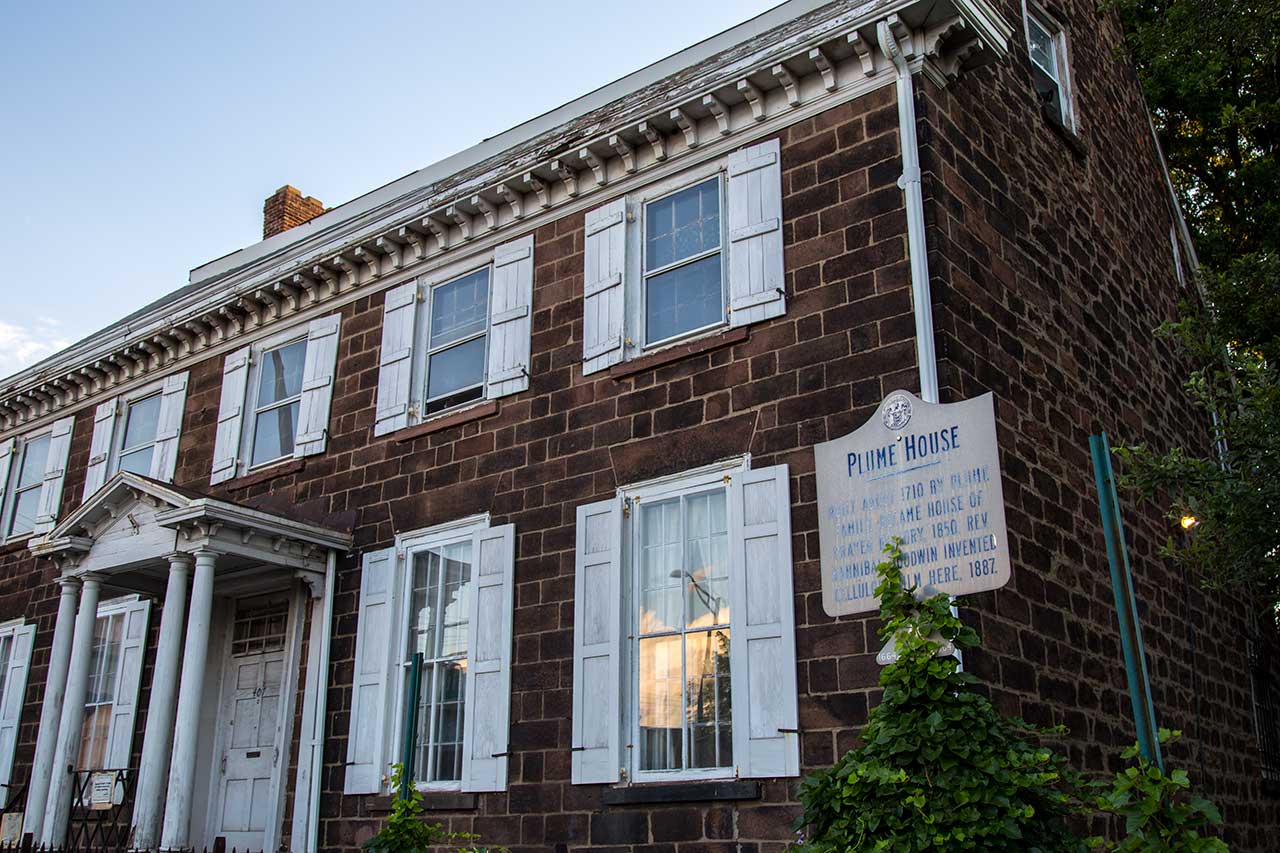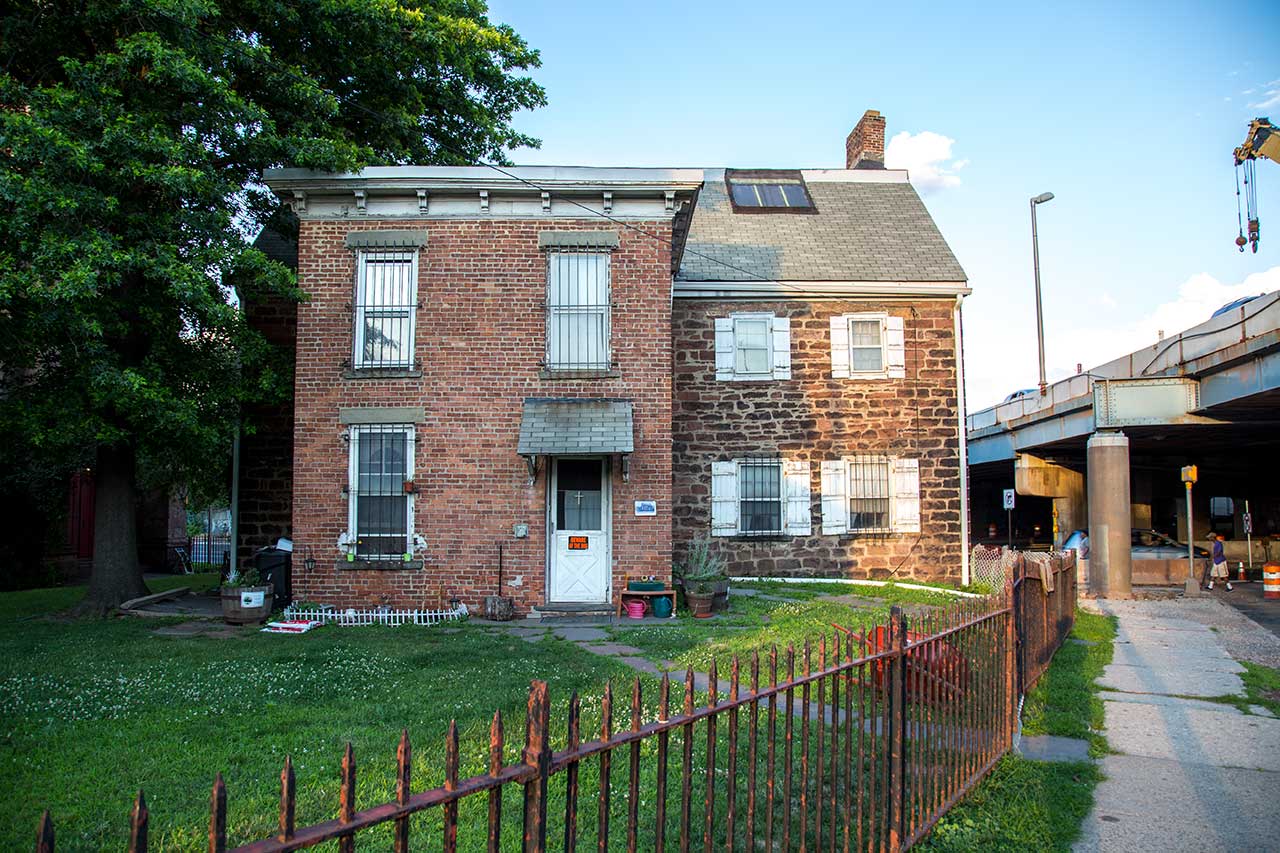 Located at 407 Broad Street in Newark, a few steps north of the Interstate 280 overpass and the Newark Broad Street Train Station, sits the rectory for the House of Prayer Episcopal Church, best known as the Plume House.
Located at 407 Broad Street in Newark, a few steps north of the Interstate 280 overpass and the Newark Broad Street Train Station, sits the rectory for the House of Prayer Episcopal Church, best known as the Plume House.
Although today’s Plume House is situated at the border of the Downtown and Lower Broadway neighborhoods, at the time its construction in the early 18th century, according to the Newark Public Library, the two-story stone structure “was on Newark’s outskirts and was surrounded by orchards and open fields with an unobstructed view of the Passaic River.” Named for its first occupants, the Plume family, the house, built by John Plume, is the second oldest in the city, following the Sydenham House near Branch Brook Park, and is among the oldest in New Jersey.
 According to Past and Promise: Lives of New Jersey Women, resident Annetje Plume was “the richest woman in Newark” at the time of her death, and Isaac Plume served with the Continental Army during the Revolutionary War. A local legend states that during the war, when “a troop of Hessians…demanded food for their horses and made themselves at home in the parlor” of the Plume House, Annetje Plume “saw a Hessian soldier enter the dairy to help himself to fresh milk,” and she “quickly shut the dairy door and bolted it from the outside.”
According to Past and Promise: Lives of New Jersey Women, resident Annetje Plume was “the richest woman in Newark” at the time of her death, and Isaac Plume served with the Continental Army during the Revolutionary War. A local legend states that during the war, when “a troop of Hessians…demanded food for their horses and made themselves at home in the parlor” of the Plume House, Annetje Plume “saw a Hessian soldier enter the dairy to help himself to fresh milk,” and she “quickly shut the dairy door and bolted it from the outside.”
Plume eventually “turned over her prisoner” to “a company of New Jersey Blues.” Plus, according to an article by The New York Times from 1973, “a legend persists that [George] Washington stopped there during his retreat in November of 1776 after the Battle of Long Island and in 1779.” At the time, four people were enslaved by the Plume family on the property, Past and Promise: Lives of New Jersey Women states, “one of whom, Sukey, was to be freed at [Annetje] Plume’s death.”
Although the house bares the Plume family name, its most notable resident was Rev. Hannibal Goodwin, the priest of the House of Prayer Episcopal Church, which acquired the property in 1849 to use as a rectory. Described by American Heritage as “a big, gregarious man with a full white beard who was beloved in his parish, especially for his work with the Sunday school,” Goodwin invented celluloid photographic camera film in the Plume House attic in 1887 “when he was unable to find suitable Bible pictures for his young charges.”
Goodwin then filed a patent application for his creation. This occurred two years before a similar invention, the ‘Kodak camera,’ was made by George Eastman’s Eastman Kodak company. According to Wired, although Goodwin died in 1900, 14 years later, “Eastman Kodak had to pay out more than…$111 million in today’s money, and 5 percent of George Eastman’s net worth then, for past infringement and future license.”
Goodwin’s legacy carried on both in Newark and in the industry. In fact, a new theater in the city was named after him and a 1920 edition of The Churchman stated that his invention made the development of the motion picture industry possible.
In the years since, despite major changes in the neighborhood, such as when “most of the congested neighborhood around the church was razed for high-rise housing,” according to the House of Prayer, and the construction of Interstate 280 just feet away, the Plume House has remained. This has largely been because of community activists like E. Alma Flagg who, according to The Krueger-Scott Oral History Collection, worked with the Newark Preservation & Landmarks Committee to save the structure from demolition.
However, although the house is still standing, it is not open for tours, and what its future will be like is uncertain.
 According to Preservation New Jersey, “traffic, particularly heavy trucks, crossing the [Route 280] overpass produces vibration that visibly shakes the house,” resulting in “cracked walls and plaster damage.” In 2010, the organization advocated for relocating the structure after three centuries in its existing location in order to preserve it from the current Route 280 construction project.
According to Preservation New Jersey, “traffic, particularly heavy trucks, crossing the [Route 280] overpass produces vibration that visibly shakes the house,” resulting in “cracked walls and plaster damage.” In 2010, the organization advocated for relocating the structure after three centuries in its existing location in order to preserve it from the current Route 280 construction project.
However, attempts to inform residents of the Plume House’s legacy are being made. For example, last year, the corner of State and Broad Streets in front of the property was designated by the City of Newark as Rev. Hannibal Goodwin Plaza, and the Friends of the Plume House organization has advocated for turning it into a visitors center.
Yet today, despite its rich history, the Plume House still remains hidden in plain sight.